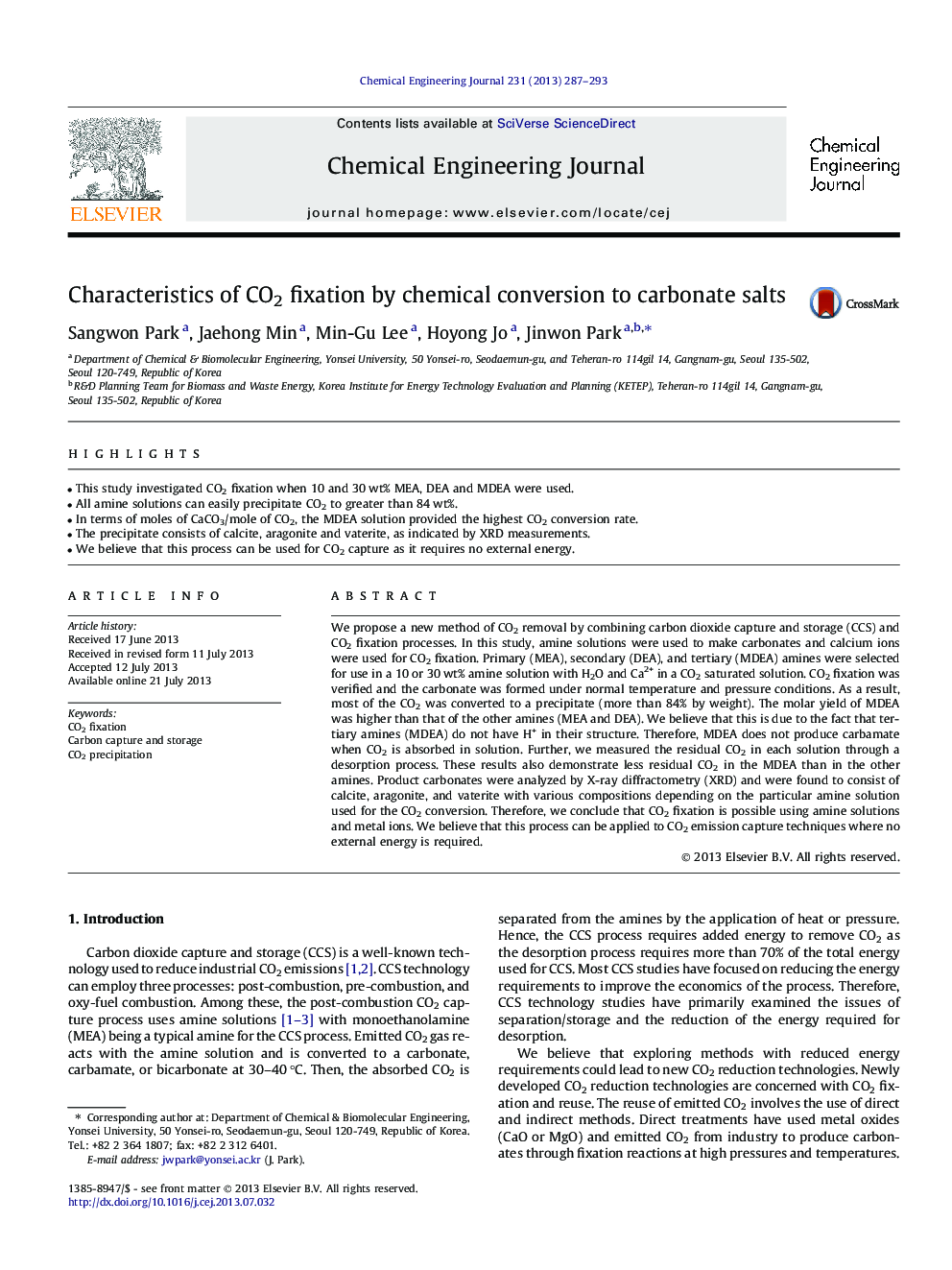| کد مقاله | کد نشریه | سال انتشار | مقاله انگلیسی | نسخه تمام متن |
|---|---|---|---|---|
| 148274 | 456408 | 2013 | 7 صفحه PDF | دانلود رایگان |

• This study investigated CO2 fixation when 10 and 30 wt% MEA, DEA and MDEA were used.
• All amine solutions can easily precipitate CO2 to greater than 84 wt%.
• In terms of moles of CaCO3/mole of CO2, the MDEA solution provided the highest CO2 conversion rate.
• The precipitate consists of calcite, aragonite and vaterite, as indicated by XRD measurements.
• We believe that this process can be used for CO2 capture as it requires no external energy.
We propose a new method of CO2 removal by combining carbon dioxide capture and storage (CCS) and CO2 fixation processes. In this study, amine solutions were used to make carbonates and calcium ions were used for CO2 fixation. Primary (MEA), secondary (DEA), and tertiary (MDEA) amines were selected for use in a 10 or 30 wt% amine solution with H2O and Ca2+ in a CO2 saturated solution. CO2 fixation was verified and the carbonate was formed under normal temperature and pressure conditions. As a result, most of the CO2 was converted to a precipitate (more than 84% by weight). The molar yield of MDEA was higher than that of the other amines (MEA and DEA). We believe that this is due to the fact that tertiary amines (MDEA) do not have H+ in their structure. Therefore, MDEA does not produce carbamate when CO2 is absorbed in solution. Further, we measured the residual CO2 in each solution through a desorption process. These results also demonstrate less residual CO2 in the MDEA than in the other amines. Product carbonates were analyzed by X-ray diffractometry (XRD) and were found to consist of calcite, aragonite, and vaterite with various compositions depending on the particular amine solution used for the CO2 conversion. Therefore, we conclude that CO2 fixation is possible using amine solutions and metal ions. We believe that this process can be applied to CO2 emission capture techniques where no external energy is required.
Journal: Chemical Engineering Journal - Volume 231, September 2013, Pages 287–293